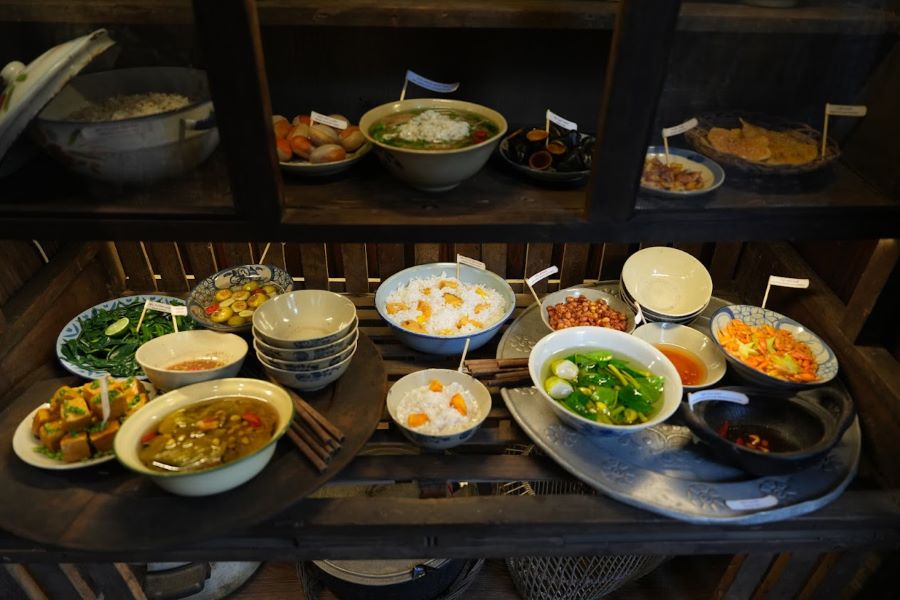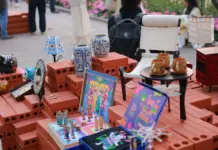The exhibition, “Tramway No. 6: A Journey Through Time”, is a unique cultural experience currently on display in Hanoi’s vibrant street food scene by Truc Bach Lake, Ba Dinh District.
Enriching Hanoi’s Cultural Landscape
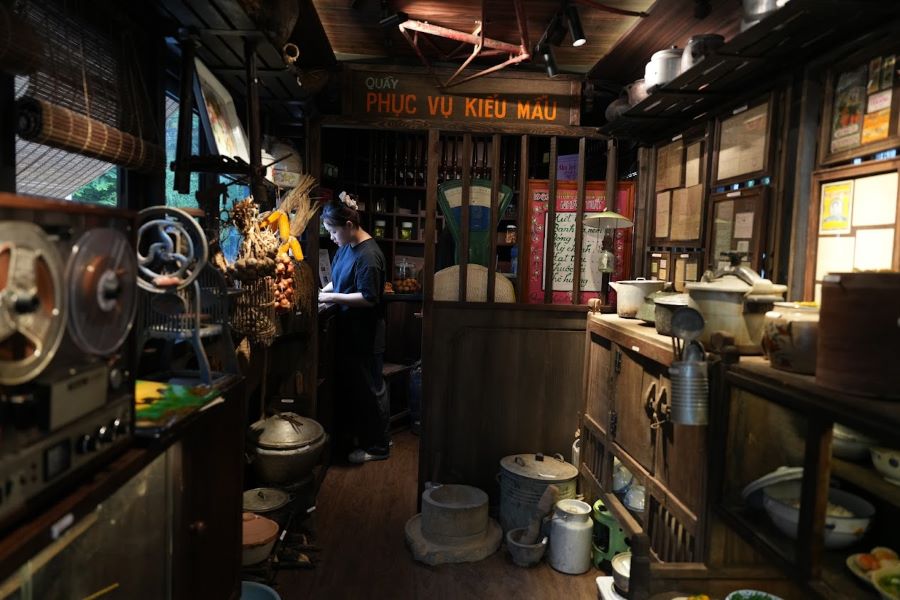 |
| The nostalgic tram takes visitors on a journey back in time. Photos: Huy Pham/The Hanoi Times |
According to Nguyen Dan Huy, Chairman of the Truc Bach Ward People’s Committee, the exhibition offers a glimpse into Hanoi’s rich cultural and culinary heritage, specifically from the subsidy period (1976-1986).
“Tramway No. 6 is a portal to the past, allowing visitors to immerse themselves in the daily lives and challenges faced by Hanoians during this meaningful era,” he added.
For those who lived through the subsidy era, it was a time of hardship and economic struggle. Vietnam’s socio-economic management faced challenges, and government control was pervasive, impacting all facets of life. Despite these challenges, the era also held significance, and the exhibition aims to showcase this unique period in Hanoi’s history.
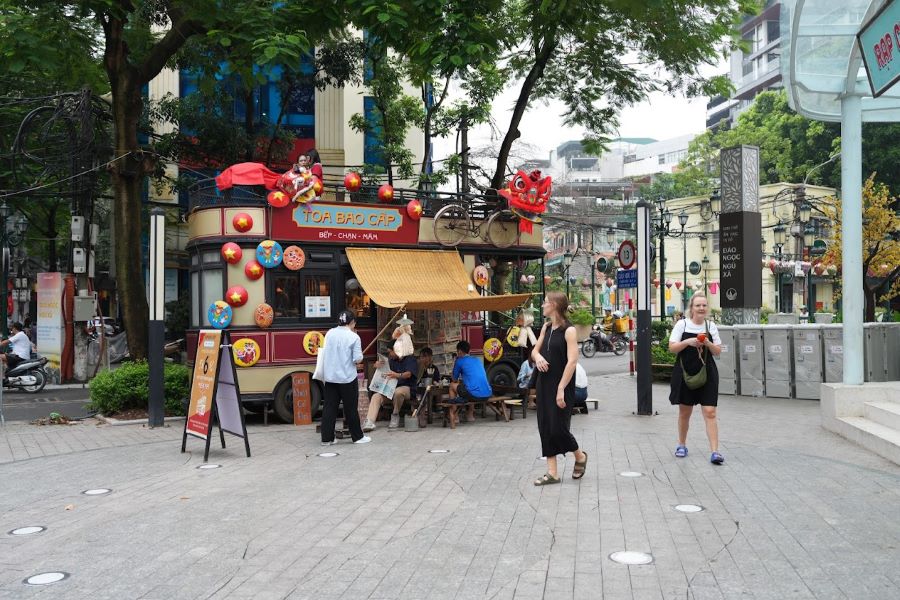 |
| The exhibition has become a beloved tourist attraction, attracting locals and foreign visitors alike. |
The exhibition is a trip down memory lane, evoking recollections of a time when food, goods, and services were rationed and obtained through vouchers. It showcases the resilience and creativity of Hanoians during this challenging era, highlighting the cuisines, appliances, and design styles that endured and continue to exist today.
This cultural space is a welcome addition to Ba Dinh District, enriching the area’s cultural offerings and providing a window into the past through the Leng Keng Heritage Project.
A Journey Through Time
Hanoi’s tram network, which operated from 1901 to 1991, holds a special place in the city’s history. With five lines connecting iconic destinations, the clanking of the trams became a familiar sound, evoking a sense of nostalgia for a simpler time.
Dieu Huong, coordinator of the Leng Keng Heritage Project, explained that the project aims to recreate the essence of old Hanoi faithfully. “Our tea shop, for example, serves only hot tea, a tradition from the past that differs from the iced tea commonly served today,” she shared.
“Additionally, we’ve included books and newspapers, which were scarce during the subsidy period but often found in tea shops, creating important spaces for information exchange and discussion,” she added.
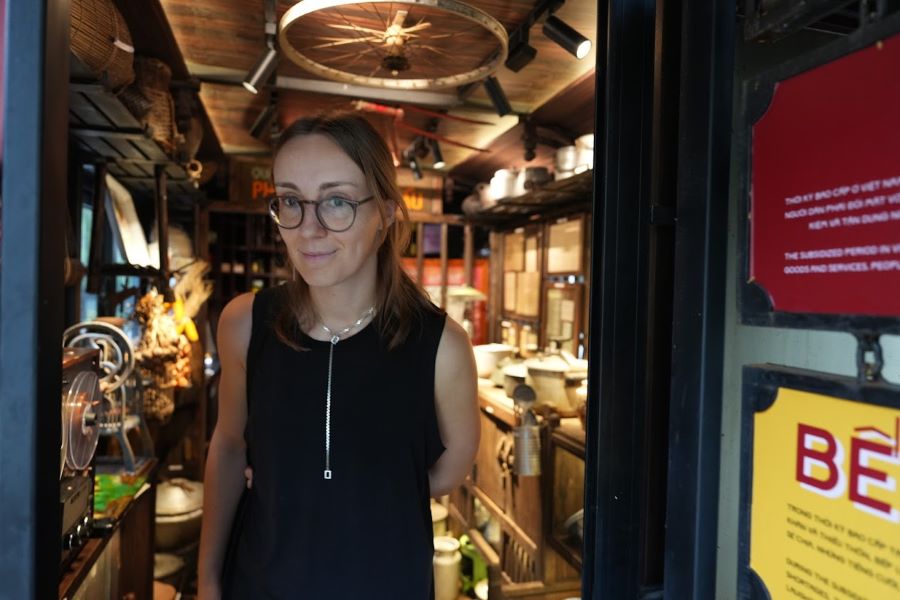 |
| A foreign visitor explores the exhibition, immersing themselves in Hanoi’s past. |
The exhibition offers a deeper understanding of Hanoi’s historical and cultural values, bridging the gap between generations. Younger Vietnamese gain insight into their ancestors’ struggles and achievements, while older generations have a platform to share their priceless memories and experiences.
“As a Hanoian born after the 2000s, I found the exhibition eye-opening,” shared Nguyet Minh, a tourist from Cau Giay District, in an interview with The Hanoi Times. “It offers a glimpse into Hanoi’s culture from decades ago, and I think it’s fantastic that young people are showing an increased interest in our historical culture and heritage.”
Tram No. 6 is a two-story exhibition space. The first floor transports visitors to a Hanoi household kitchen from the subsidy era, complete with wooden cupboards, thermos flasks, and oil stoves. These old kitchen utensils, once considered a luxury, evoke a sense of nostalgia.
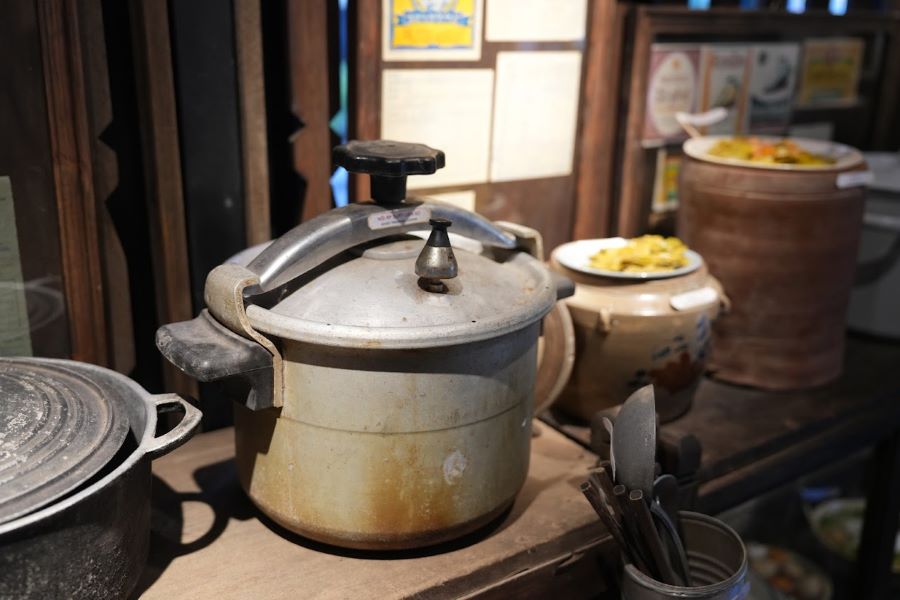 |
| These old kitchen utensils were once considered a ‘treasure’ for Hanoi housewives and were a rarity in most households. |
The artifacts on display are real, either compiled by the organizers or donated by local residents, each with its own story to tell. They paint a picture of the daily lives and struggles of Hanoi families during that era.
The exhibition also showcases typical dishes from the subsidy period, such as com don san (steamed red rice with cassava) and long xao dua (stir-fried pork intestines with pickled mustard greens). It’s a culinary journey through time, offering a taste of Hanoi’s past.
The outdoor area is designed as an old-style tea shop, reminiscent of Vietnam’s post-war period from 1975 to 1986. With old newspapers and low plastic stools, it invites visitors to relax and imagine themselves in a different era.
Popular snacks from that time, like peanut candy and Che Lam cake, are also available, adding a sweet touch to the exhibition.
The second floor of the tram is a Vietnamese restaurant, where visitors can savor dishes from the subsidy era, offering a unique dining experience.
Tramway No. 6 is open daily from 15:00 to 22:00, inviting locals and travelers alike to step back in time and explore Hanoi’s rich cultural heritage.
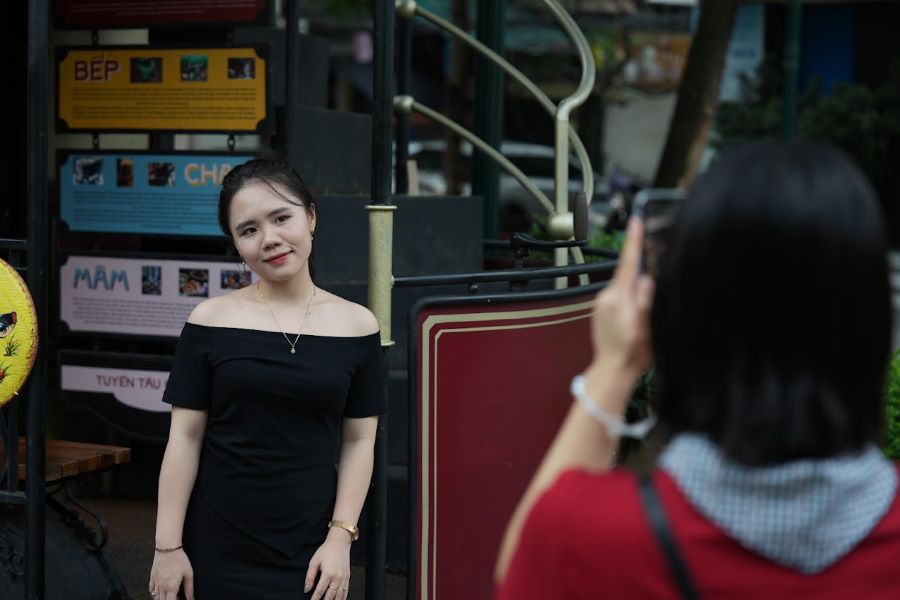 |
| Young tourists are drawn to this unique tram, eager to capture memories and learn about Hanoi’s past. |
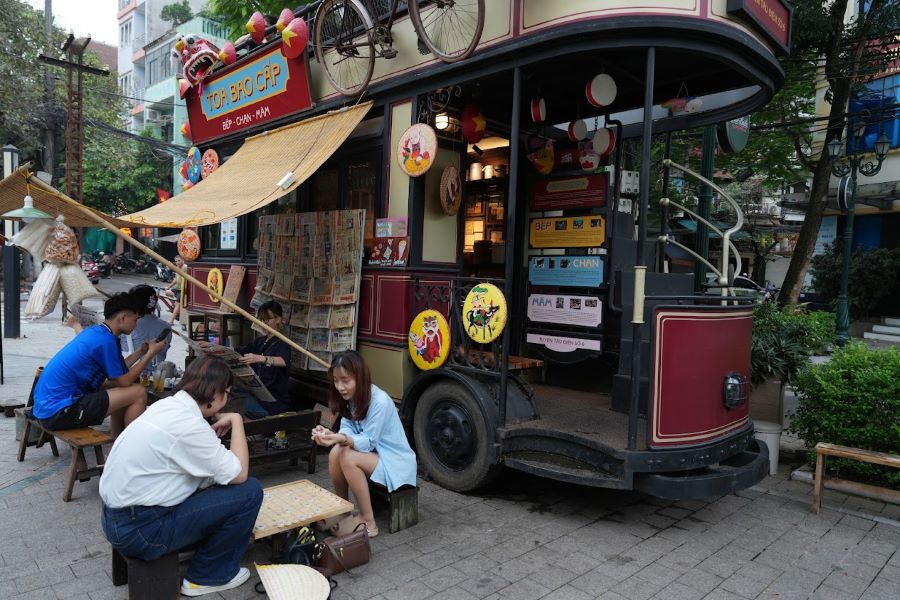 |
| Pavement tea shops, a popular gathering place for friends during the subsidy period, reflect the social fabric of the time. |
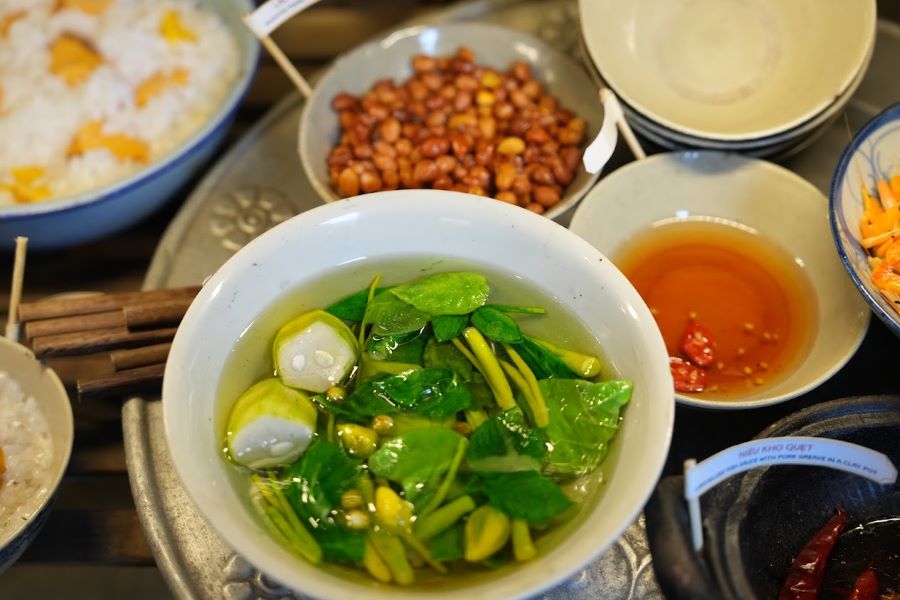 |
| A Hanoi specialty, Malabar spinach soup with Vietnamese luffa, is a delicious reminder of the subsidy era’s culinary delights. |
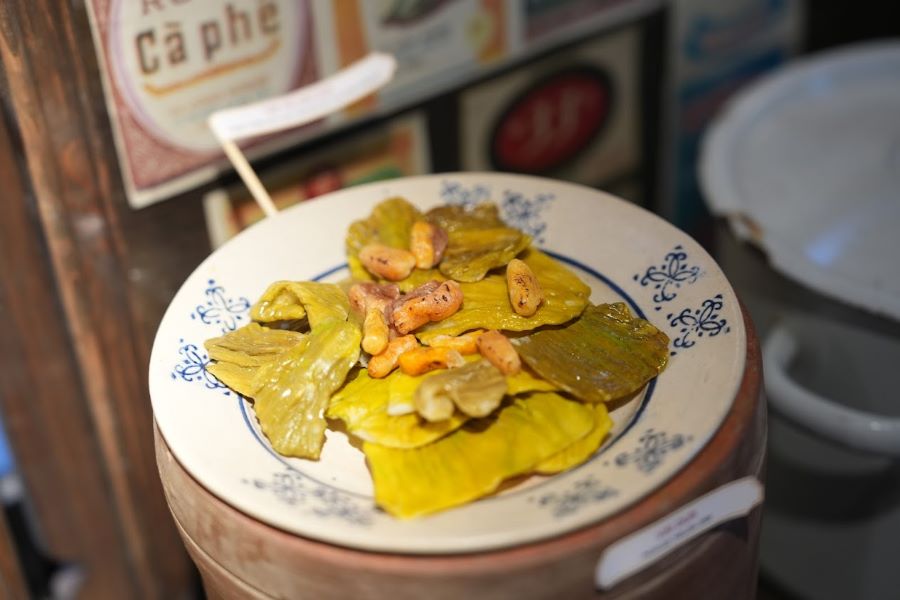 |
| Long xao dua, stir-fried pork intestines with pickled mustard greens, is a tasty treat and a subsidy period favorite. |
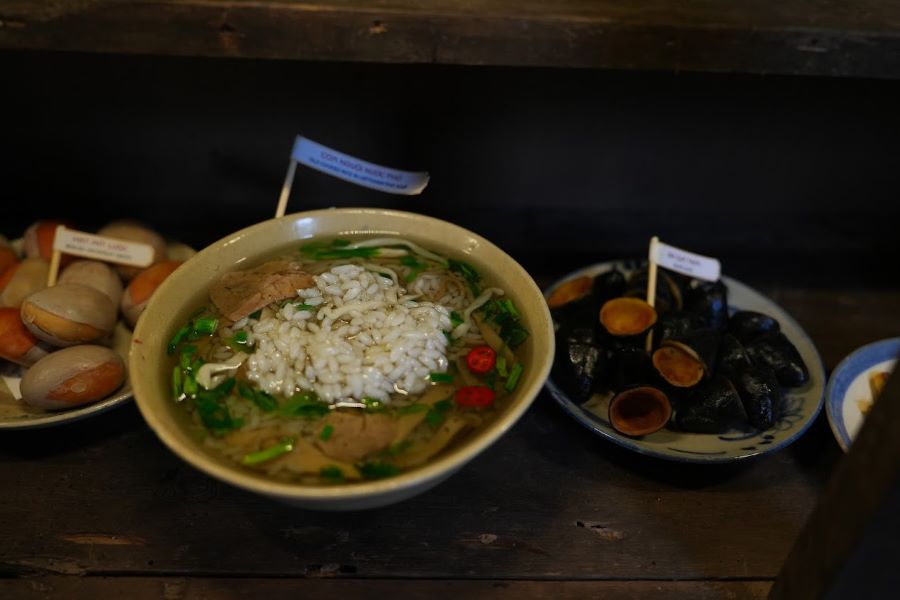 |
||
A unique Hanoian custom was to save food, often eating cold rice with beef noodle soup, a tasty tradition.
|
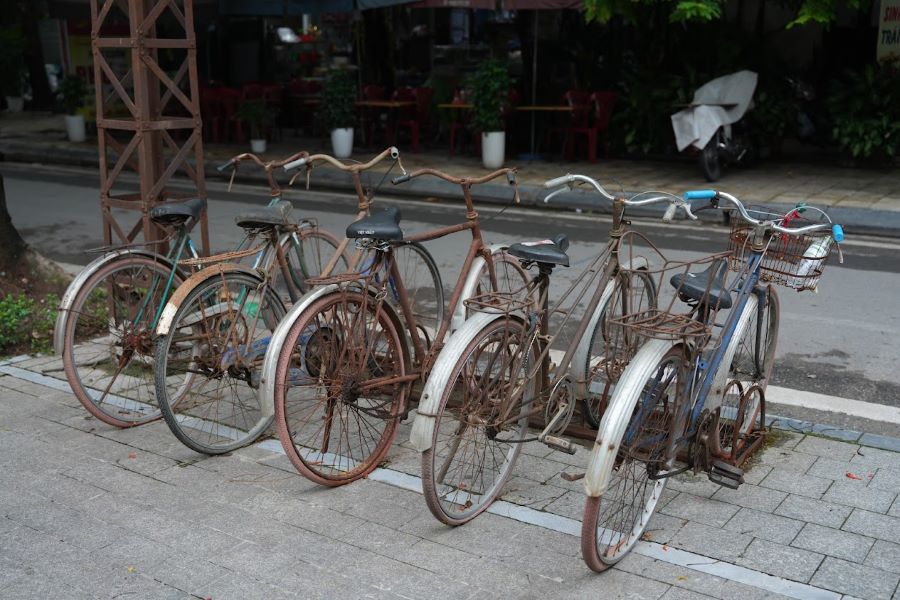 |
| Bicycles were the most popular mode of transportation during the subsidy period, a common sight in Hanoi’s streets. |
 |
| Public water taps were a common sight in Hanoi during the 1980s, a reminder of simpler times. |
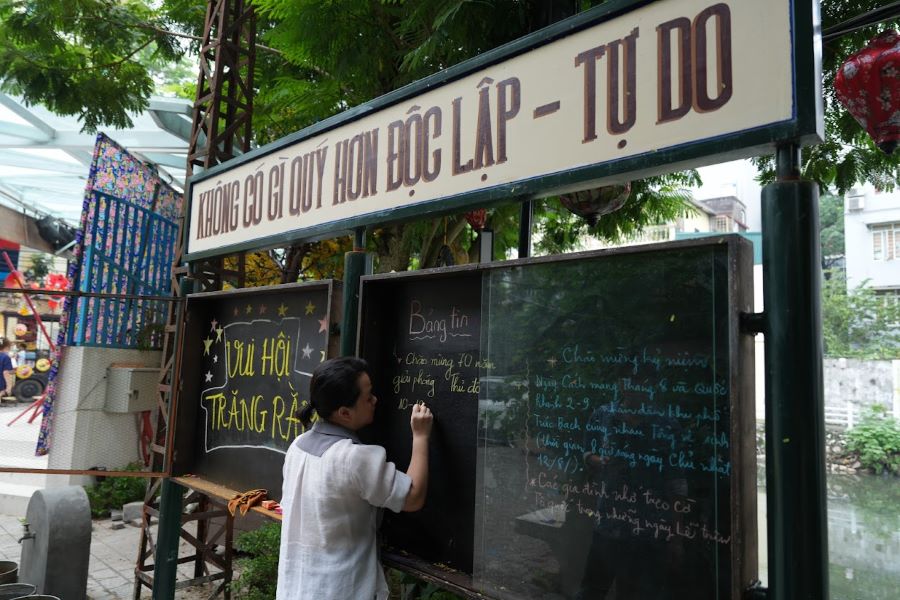 |
| Notice boards were a primary means of communicating important information to the public in the 1980s, a nostalgic reminder of pre-digital days. |
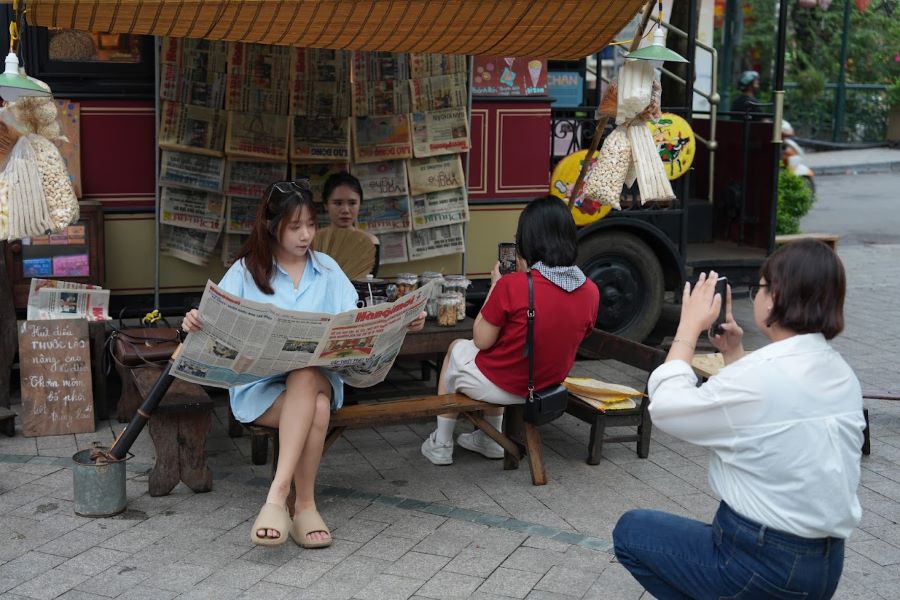 |
| The exhibition is a popular weekend destination for young locals, offering a fun and educational experience. |
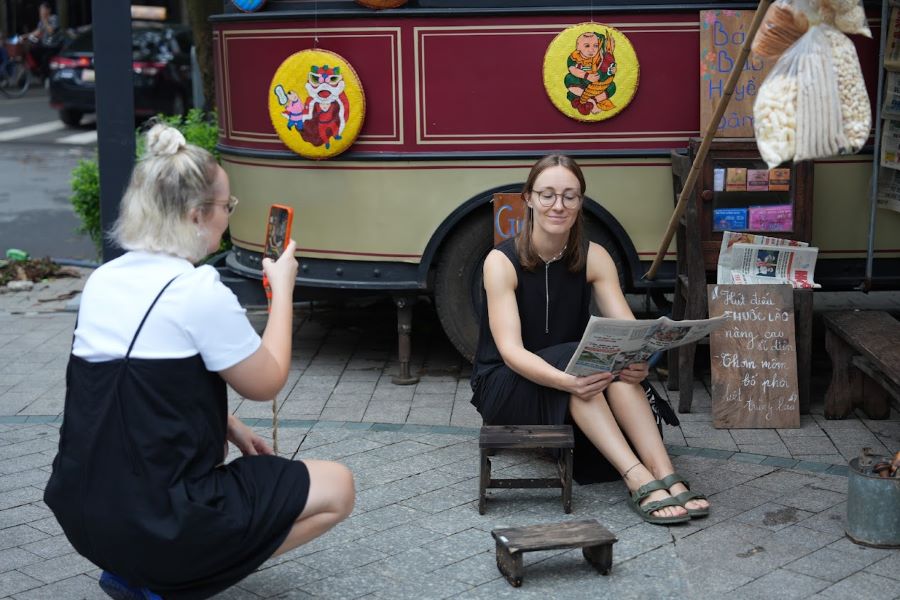 |
| Tramway No. 6 is also a draw for foreign tourists, offering a unique insight into Hanoi’s rich cultural history. |
Ancient house in Ma May
NDO – Ma May, a rare quarter that still retains several old houses, has created one of the characteristics of Hanoi. Hanoi’s streets are becoming increasingly crowded and traditional features can sometimes be hidden behind modern life. But if one takes the time to relax and look around, the ancient features begin to reveal themselves.

